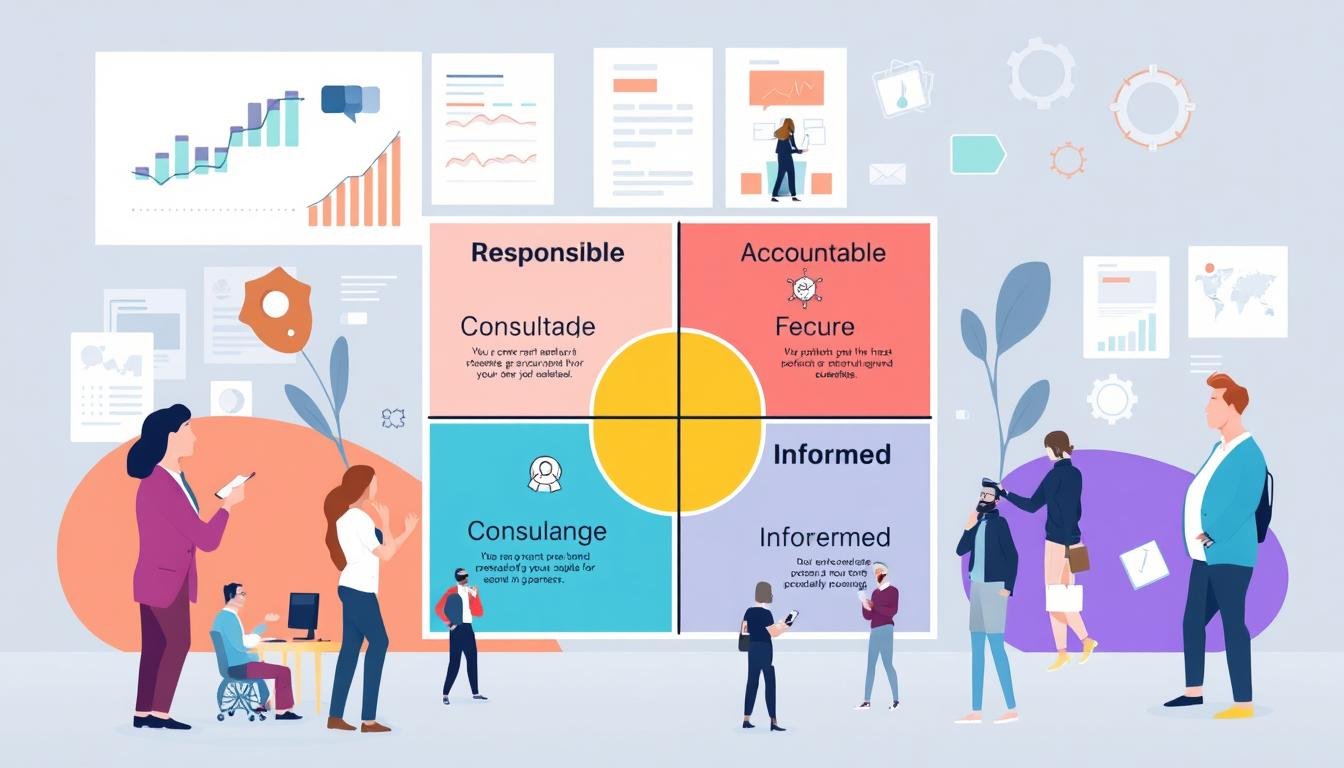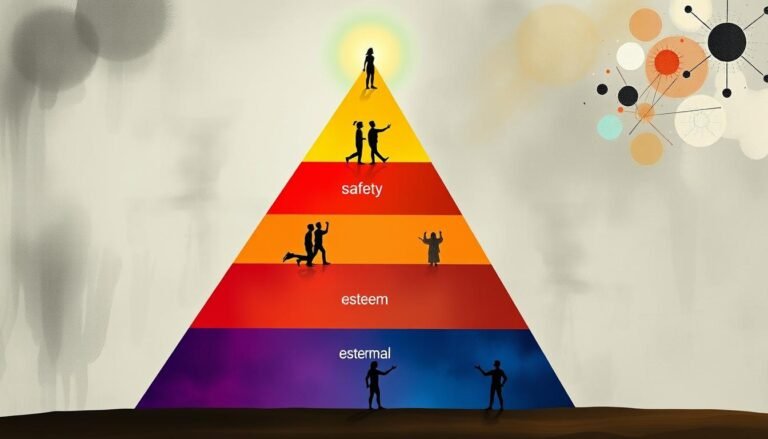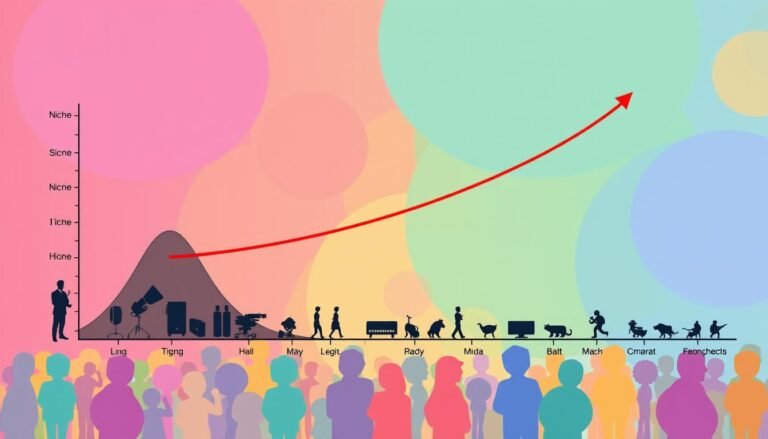Mastering RACI Matrix for Project Success
Have you ever thought about why 78% of projects fail because of unclear roles and responsibilities? The answer might be in the RACI Matrix, a key tool in project management. It helps outline who does what, making things clear and keeping everyone accountable. By using this tool, teams can work better together, leading to more successful projects.
Key Takeaways
- The RACI matrix clarifies roles by defining Responsible, Accountable, Consulted, and Informed stakeholders.
- 78% of projects face challenges from unclear ownership among team members.
- Collaboration in creating the RACI matrix can lead to improved project outcomes.
- Regular reviews of the RACI matrix can help prevent bottlenecks and ensure accountability.
- Ensuring only one person is accountable per task can help avoid role conflicts.
- 85% of projects using the RACI matrix report improved communication.
Understanding the RACI Model
The RACI model is key for making project roles clear. It helps teams know who does what, making things run smoother. By setting out each role in the RACI chart, teams work better together.
Defining RACI: Responsible, Accountable, Consulted, Informed
The RACI model has four main roles:
- Responsible (R): These people do the tasks needed to finish the project.
- Accountable (A): This person makes sure tasks are done right.
- Consulted (C): They give advice and share their knowledge to help the project.
- Informed (I): These people stay updated but don’t make decisions.
The Role of Each Designation in Project Management
Knowing the RACI roles helps manage projects better. Each task has one person in charge, and many can offer advice. This clear setup cuts down on confusion and makes projects go smoothly.
The RACI chart shows tasks and roles clearly. It’s great for big projects with lots of people and tasks. You can also use other models like RASCI or DACI to fit your project’s needs, making it easier to manage different teams.
The Importance of RACI in Project Management
The RACI model is key for better project management by setting clear roles. It helps avoid misunderstandings that can cause delays. This structure and clarity make sure everyone knows their part in the team.
Clarifying Roles and Responsibilities
A clear Accountability Matrix shows the four main roles: Responsible, Accountable, Consulted, and Informed. Almost all project rescue efforts point to a lack of clear roles as a main issue. By setting these roles, teams work better, reducing confusion and making projects clearer.
Streamlining Communication
Good communication is crucial for project success. The RACI matrix cuts down on meetings and emails by focusing on only needed people. This leads to better teamwork and fewer wasted resources. In fact, half of project costs could be lost due to poor communication, showing how vital the RACI model is.
Encouraging Ownership and Accountability
Knowing their roles in the Accountability Matrix makes team members feel more responsible. This leads to better engagement and a stronger team. The RACI model’s clarity encourages team members to take the lead, which is key for success in a tough market.
| RACI Role | Description |
|---|---|
| Responsible (R) | The person who performs the task. |
| Accountable (A) | The person who ensures the task is completed correctly. |
| Consulted (C) | Individuals who provide input into the task. |
| Informed (I) | Those who need to be kept up-to-date on progress. |
Implementing the RACI Model: A Step-by-Step Guide
To make RACI work well, start by listing all project tasks needed for your project. Then, find out who the project stakeholders are. After that, decide who is responsible, accountable, consulted, or informed for each task. Use a Responsibility Assignment Matrix to make it clear.
Having a visual matrix helps match tasks with people’s roles easily. It makes delegating tasks simple. Checking the chart often helps everyone know their part. This stops misunderstandings and keeps everyone accountable.
Studies show that using RACI right cuts down on confusion and boosts team spirit. It tells people who to talk to for help, making work less stressful.
A good RACI matrix means smoother project flow, better teamwork, and projects done on time and within budget. It connects individual roles with the company’s goals. This makes the work environment more productive, where everyone knows how they help the company succeed. Make sure everyone knows their role for the best use of RACI.
| Step | Description |
|---|---|
| 1. List Project Tasks | Identify all tasks associated with the project and their significance. |
| 2. Identify Stakeholders | Determine all relevant project stakeholders involved in the execution of tasks. |
| 3. Assign Roles | Utilize the RACI framework to assign Responsible, Accountable, Consulted, or Informed roles. |
| 4. Create Matrix | Design a visual representation of the tasks and corresponding roles for easy reference. |
| 5. Review Regularly | Continuously review the matrix to ensure clarity and understanding among team members. |
Tips for Creating an Effective RACI Chart
Creating a good RACI chart needs a clear plan. This plan helps make roles and responsibilities clear. Using best practices can make managing tasks better in project teams. Here are some tips to make sure your RACI chart works well.
Educating the Team on RACI Roles
First, teach all team members about the four main roles in the RACI framework: Responsible, Accountable, Consulted, and Informed. This helps everyone know their job in the project. When team members understand these roles, they work better together towards goals.
Ensuring Clear Accountability
Make sure one person is in charge of each task to avoid confusion and speed up decisions. This is important because 74% of projects have problems with unclear roles. Having one person accountable means everyone knows who to go to for help or approval. Several people can give advice, but only one should be fully responsible.
Utilizing Color Coding for Better Visibility
Using color in your RACI chart makes it easier to see and understand. A good chart shows which tasks need attention and helps balance the team’s workload. Color coding makes it clear and strengthens accountability in managing tasks.
| Role | Description | Ideal Use Case |
|---|---|---|
| Responsible | The individual(s) completing the task | Assigned to tasks with clear deliverables |
| Accountable | The individual who ensures task completion | Essential for clear decision-making |
| Consulted | Individuals providing input or expertise | Useful in gathering diverse insights on complex tasks |
| Informed | Individuals kept updated on task progress | Necessary for large projects with multiple stakeholders |
Real-Life Examples of RACI Charts in Action
RACI charts show their value in many industries, making projects run smoother. They clearly outline who does what, making everyone clear on their roles. This helps in many areas.
Application in Healthcare Projects
In healthcare, RACI charts help doctors, managers, and staff work better together. They make sure everyone knows their job. By minimizing confusion and setting clear tasks, the RACI model encourages teamwork. This leads to better care for patients.
Construction Industry Use Case
The construction world gets a lot from RACI charts because it has many people involved. Architects, builders, and suppliers know their roles. This clear plan prevents delays and misunderstandings, which are key in building projects.
Marketing Team Collaboration
Marketing teams use RACI charts to work better together on campaigns. They assign specific jobs to managers, writers, and designers. These clear roles help the team work more efficiently and finish projects faster.
| Industry | Key Roles | Benefits of RACI Model |
|---|---|---|
| Healthcare | Healthcare Providers, Project Managers, Support Staff | Clarity in roles strengthens collaboration, enhances patient outcomes |
| Construction | Architects, Contractors, Suppliers | Avoids delays and miscommunication, ensures project fluidity |
| Marketing | Project Managers, Content Creators, Graphic Designers | Improves accountability, streamlines campaign launches |
Common Challenges and Pitfalls in Using RACI Charts
RACI charts are key to project success, but they come with challenges. They help define roles and clarify responsibilities. Yet, they can lead to issues if not used right. It’s important to tackle these challenges early to keep projects on track.
Overcoming Role Ambiguity
Role ambiguity is a big issue with RACI charts. It’s vital to clearly define who does what. Without clear roles, team members might struggle with their tasks. This can cause delays and problems with managing the project.
Avoiding Convoluted Approval Processes
Big projects often have slow approval processes with RACI charts. When many people are responsible for a task, decisions take longer. Making these processes simpler and keeping accountability clear can make things run smoother. Regular checks on the RACI chart can help streamline approvals.
Mitigating Confusion in Large Teams
Big teams often find it hard with RACI charts because of the many people involved. Managing accountability can lead to confusion. Keeping the RACI chart up-to-date and encouraging open talk helps. This way, everyone knows their role and what’s expected of them.
RACI Matrix Variations and Alternatives
The RACI model is flexible, letting teams adjust it for their project needs. The RASCI model is a key variation that adds a Supportive role. This role helps team members work better together, leading to smoother project flow.
This makes RASCI a popular choice for managing projects. It boosts team dynamics and project efficiency.
Exploring the RASCI Model
The DACI framework also helps with decision-making. It clearly outlines roles like Driver, Approver, Consulted, and Informed. This makes it easier to know who makes decisions and keeps the workflow smooth.
It also avoids confusion and ensures everyone knows their part, especially in big projects with many people involved.
Understanding the DACI Framework
The CARS approach, short for Consulted, Accountable, Responsible, and Supportive, offers another way to define roles. It focuses on support, which is great for teamwork. This makes it a good choice where working together is key.
When picking from RACI model variations like RASCI or DACI, teams should think about what they need for their projects. This helps improve productivity and efficiency.
Source Links
- Mastering Project Clarity: The Power of the RACI Matrix
- Mastering RACI for Effective Project Management Roles
- Responsibility assignment matrix
- What Is A RACI Chart? How This Project Management Tool Can Boost Your Productivity
- What is RASCI / RACI
- The RACI matrix: Your blueprint for project success
- RACI Matrix: Responsibility Assignment Matrix Guide for 2024
- What Is RACI And Why Is It Important: A Comprehensive Guide By Zagreb Global Group
- How & Why to Implement the RACI Matrix for Project Success
- Master the RACI Matrix: The Ultimate Guide to Defining Project Responsibilities – Project Management Report
- RACI Charts – The Ultimate Guide, with Examples [2024] • Asana
- Creating a RACI matrix: define your team’s roles and responsibilities by Forecast
- What Is a RACI Chart? Practical Examples & Project Uses
- 9 RACI Matrix Examples for Project Management | ClickUp
- What is the RACI Model?
- Advantages and Disadvantages of the RACI Matrix for Project Teams
- What are the common challenges or pitfalls of using RACI in lean six sigma and how do you overcome them?
- RACI, RASCI, RACI-VS: which variant of the RACI matrix is right for you? – Perfony
- 6 RACI Matrix Alternatives to Help Define Project Roles







